#Buster Keaton: A Filmmaker's Life
Text




"I’m just a farmer now,” Keaton told Mel Heimer. “I’ve got this little farm in San Fernando Valley with nine walnut trees...” And as he trailed off, he leaned back comfortably and he smiled.
A Filmmaker’s Life by James Curtis [page 588]
#buster keaton#1930s#1910s#1920s#1920s hollywood#silenst film#silent comedy#silent cinema#silent era#silent movies#pre code#pre code hollywood#pre code film#pre code era#pre code movies#damfino#damfinos#vintage hollyw#vintage hollywood#black and white#buster edit#old hollywood#slapstick#eleanor keaton#a filmmakers life#james curtis
20 notes
·
View notes
Text
#MovieMonday Buster Keaton accidentally marries Kate Price in “My Wife’s Relations,” 1922, but he manages to make a great escape…
#movie monday#buster keaton#my wife's relations#the great escape#james curtis#biography#a filmmaker's life#silent era#silent movies#vintage hollywood#1920s#ibks#the international buster keaton society#buster keaton society#the damfinos#damfino#damfamily
8 notes
·
View notes
Text
“Buster was assigned an office next to mine,” editor Gene Fowler, Jr., remembered. “One day, I heard such a commotion I went next door to see what it was. Buster was repeatedly throwing himself against our common wall. I said, ‘What are you doing?’ He said, ‘I’m writing!’ ”
- Buster Keaton: A Filmmaker’s Life by James Curtis
#I just really like this#this is how I imagined he would write#buster keaton#Buster Keaton: A Filmmaker’s Life#James Curtis
32 notes
·
View notes
Text
youtube
Are you a Buster Keaton fan? Have you seen my documentary Oh Buster, Where Art Thou? Good news, you can watch it for FREE on YouTube!! Check it out while you wait for my follow-up book, Another New World, dropping November 25th!!
#buster keaton#buster keaton book#buster keaton documentary#silent film#movies#classic film#classic movies#biography#life story#buster keaton biography#book release#oh buster where art thou?#free movie#buster keaton fans#buster#keaton#bookblr#independent author#independent film#female filmmakers#non fiction novel#non fiction#Youtube
12 notes
·
View notes
Text
6 Things I Learned from the Lisa Frankenstein Commentary

We don’t get movies like Lisa Franeknstein often, which is a shame because it’s endlessly charming yet delightfully twisted. While it disappointed at the box office, it has "cult classic" written all over it.
The coming-of-age horror-comedy is out today on Blu-ray and DVD. Among the special features is an audio commentary by Zelda Williams. Here are 6 things I learned…
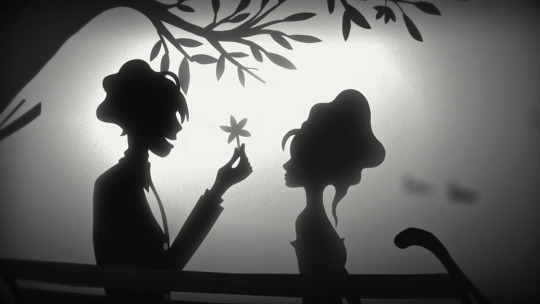
1. Catch Me If You Can inspired the opening credit sequence.
The opening credit sequence, which briefly depicts the Creature's love story from his previous life in the style of Victorian shadow box art, was inspired by Catch Me If You Can.
"We wanted to do something interesting with the credits in this bit. I was really inspired by Catch Me If You Can, which I thought the opening credits were particularly interesting and helped establish the story before we ever got to it. And because Creature doesn't speak this whole movie, I wanted an opportunity to show what his life would have been like."

2. The film was originally intended to be rated R.
Although Lisa Frankenstein pushes the PG-13 rating as far as it can go, it was originally intended to be a hard R. Williams cites the party scene, in which Lisa originally smoked a laced joint rather than drinking a PCP cocktail, as a difficult revision.
"This is where stuff got a little complicated when we were going from R-rated to PG-13. Originally there was a coated joint they were passing around. This is one of the only scenes that I'm not sure I'm as fond of in comparison to the joint stuff. Most of the rest of the changes were fine, but this one I find very strange. It's just a very different reaction and interaction than what used to be there. However, these are the things that happen when making a movie."

3. Creature is an homage to Day of the Dead's Bub.
Not only Lisa is seen watching George A. Romero's Day of the Dead in the film, but the Creature is an homage to its iconic zombie, Bub.
"Creature for me is definitely an homage to Buster Keaton, but he's also an homage to the zombie you just saw on screen, Bub, who was in Day of the Dead, a Romero movie that I'm very fond of. It was an incredibly emotive and a very intelligent zombie and ended up getting revenge against the asshole in the movie. It was one of my favorite monsters ever made, so when I could put that on screen during the movie, it made me very happy."
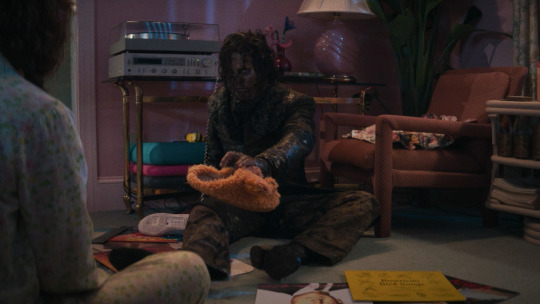
4. Zelda hid a tribute to her father, Robin Williams.
Williams is the daughter of Robin Williams, and she included his 1983 comedy album, Throbbing Python of Love, among the records scattered on the floor in Lisa's living room.
"Oh, there's Dad! We used one of Dad's vinyl albums because we had to scatter some across the floor." She refers to it as "a little, mini Easter Egg for me."
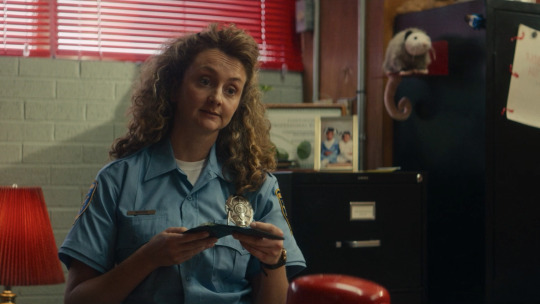
5. The police officers are named after John Waters.
The police officers in the film are Officer John (played by Walker Babington) and Officer Waters (Sylvia Grace Crim) — named on a whim in honor of cult filmmaker, John Waters.
"They asked me to name the cops, because obviously they needed to have name tags, so I named them Officer John and Officer Waters." She thought no one would notice since they're so small, but a viewer pointed it out at a test screening.
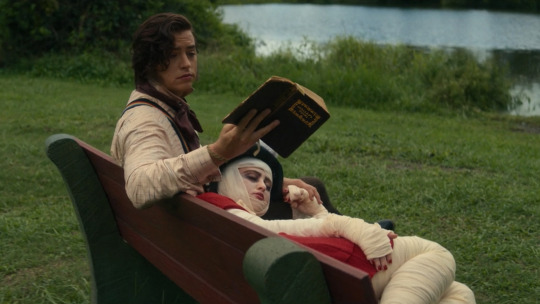
6. The film is sprinkled with movie references.
Williams wore her influences on her sleeve with her directorial debut, and she pointed out several references on the commentary:
A Trip to the Moon (clip featured in Lisa's surreal dream sequence)
The Cabinet of Dr. Caligari (stylistic inspiration on the dream sequence)
Weird Science (the party scene)
Suspiria (red lighting during drug sequence)
My Boyfriend's Back (camera shot from inside a grave looking up at characters)
Kill Bill (weapon point-of-view shot)
E.T. (a boy on a bike — played by Diablo Cody's son — at the end)
Notting Hill (reading together on a bench at the end)
Lisa Frankenstein is available now on Blu-ray, DVD, and Digital via Universal.
#lisa frankenstein#zelda williams#diablo cody#kathryn newton#cole sprouse#article#review#dvd#gift#liza soberano#henry eikenberry#joe chrest#carla gugino#horror#horror comedy
177 notes
·
View notes
Text
Something I think is a bit of an issue is the myth that the "great" films from the past are all boring, unrelatable and incomprehensible. That some black and white foreign film from Sweden can only be a really slow, dour experience. I'll admit that I was guilty of that thought at one point too.
The reality is that lots of these great films are actually broadly enjoyable. The reason they're considered great isn't because of elitism, some snobby ideal that they're hard to watch and therefore better, but because they're just extremely well made and stylized films. The black and white Swedish film? That describes a number of Ingmar Bergman films like The Seventh Seal. And The Seventh Seal is hilarious, even now. I honestly thought it was going to just be really serious and depressing but it's a life riot (when not being serious and depressing). There's a scene where a man is trading insults with his wife's lover, but he's not very smart so another man is whispering insults to him to use. It's about a knight that plays chess with death for a chance at living, but death is a cheating bastard that delivers one liners before he kills someone.
I know that a lot of people really only watch whatever is popular and recent, and that's fine, but I don't want people to miss out on truly great films because they think they'd be hard to watch. I did a showing of a silent film at work (One Week by Buster Keaton) and everyone was enthralled by the stunt work on display. It's over 100 years old and it still holds up because there's no expiration date on quality.
If you are looking to engage with older films though, skip Tarkovsky for now. Stalker and Solaris are two incredible films (Stalker is probably top ten for me), but those are absolutely the cliche of some slow, hard to follow "true art is incomprehensible" film. Terrence Malick as well. Excellent filmmaker, but watching The Tree of Life is work. Kurosawa and Hitchcock are some of my favorite directors and every movie they make is straightforward and thrilling. High and Low is the most incredible police procedural I've seen in my life, and Psycho is still a tense, thrilling experience.
To be clear there is absolutely nothing wrong with liking the most popular stuff. I used to watch every marvel movie that came out, and I still think Wandavision is excellent. I have fond memories of going to watch Captain America with friends. I loved the Barbie movie and that's in the top 15 highest grossing films of all time. I just think that there's a lot of great films to explore if you're willing to try.
#movie#cinema#film#buster keaton#one week#ingmar bergman#the seventh seal#andrei tarkovsky#stalker#solaris#terrence malick#the tree of life#wandavision#barbie#marvel#mcu#akira kurosawa#alfred hitchcock#high and low#psycho 1960#captain america#Yes Martin Scorsese is trending again#Killers of the Flower Moon looks incredible though
352 notes
·
View notes
Text
The Actor Who Played Jar Jar Binks Is Proud of His ‘Star Wars’ Legacy
Ahmed Best recalls the painful backlash to the “Phantom Menace” character that was considered a racial stereotype at the time but is now embraced by fans.
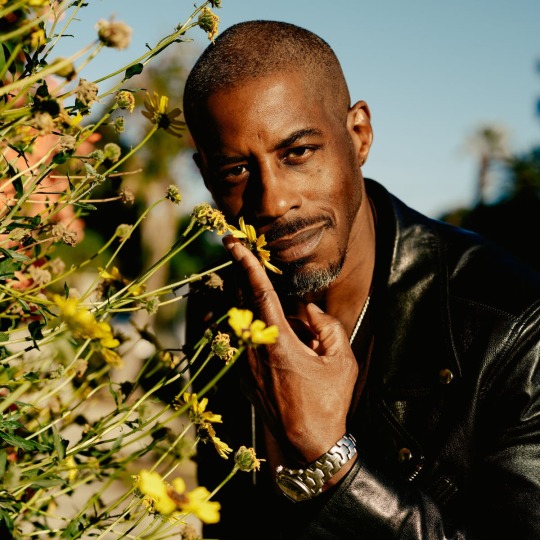
Ahmed Best is a futurist, an educator, a martial artist, a writer-director, and the actor behind Jar Jar Binks, the most hated character in the “Star Wars” universe.
Long-eared Jar Jar is a bipedal amphibianlike creature with an ungainly walk and a winning attitude. The groundbreaking, computer-generated goofball debuted in the first installment of George Lucas’s prequel trilogy, “Star Wars: Episode I — The Phantom Menace,” and instantly set off widespread criticism from both fans and the press.
“It took almost a mortal toll on me. It was too much,” Best recently recalled. “It was the first time in my life where I couldn’t see the future. I didn’t see any hope. Here I was at 26 years old, living my dream, and my dream was over.”
Now 50, Best is the picture of panache who could easily be mistaken for an off-duty rock star. He arrived at our interview, riding a motorcycle and wearing a blue denim jacket, black jeans, and stylish shades.
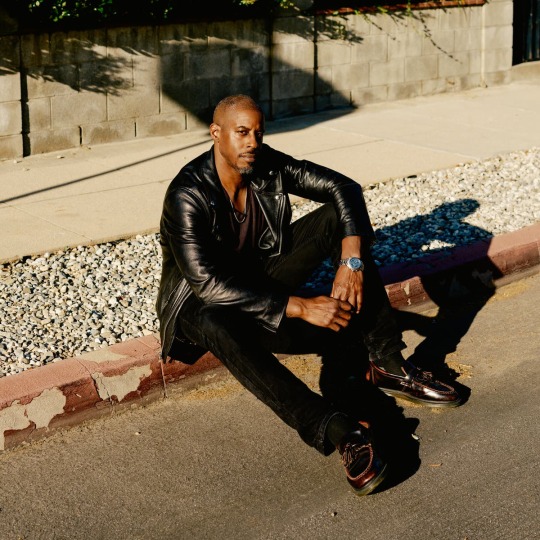
In the presence of Best’s self-assured demeanor, it’s even more shocking to learn that back in 1999, the vitriol fans flung at Jar Jar and, in turn, at him, ravaged his mental health. But he revisited these memories a few weeks before the movie’s return to theaters on Friday to commemorate the 25th anniversary of its release.
Two constellations, “Star Wars” and “Star Trek,” nurtured Best’s curiosity for both science and the arts as a child in the South Bronx. The 1977 “Star Wars” (Episode IV) was the first movie he ever saw in a cinema. Back then, being part of the intergalactic saga seemed unfathomable.
Twenty years later, Best was performing in “Stomp,” the theater show where performers communicate through rhythm and acrobatics, when Robin Gurland, the casting director on “Phantom Menace,” attended a performance in San Francisco. She had spent months conducting an exhaustive search for the actor who could embody Jar Jar’s physicality. That evening, she found him.
“There was just something so electrifying about his performance; it was natural and innovative,” Gurland said by phone. “I couldn’t take my eyes off of Ahmed.”
“What if you were from this other planet, totally different from anything we know? How would you move?” Gurland recalled asking Best during his audition at Skywalker Ranch. “He got it immediately and was able to just create this being out of thin air.”
Doug Chiang, the design director on “Phantom Menace,” remembered Lucas describing Jar Jar as a combination of the silent comedy stars Harold Lloyd, Charlie Chaplin and Buster Keaton. Lucas ruled out a puppet for the alien creature, Chiang said, but still needed Jar Jar to appear grounded in reality to hold up against live actors onscreen.
“Even though this was a synthetic character, created out of ones and zeros, George wanted it to have a lot of expression,” Chiang said via video call. “The actor component was absolutely critical.”
Commonplace now, motion capture, the process of recording a person or object’s movement to serve as the basis for a digital entity, was mostly uncharted territory. Jar Jar became the first main character in a feature film created this way, though initially, the filmmakers didn’t know if it would work.
When Best landed the part as well as the separate assignment to voice the character — providing a playful take he often used with his younger cousins — he thought “it was surreal,” he recalled, adding with a laugh, “I was like, ‘Why me?’ I wanted it, of course, and I’m glad George believed in me, a 23-year-old kid from the streets of New York.”
In Chiang’s view, “Ahmed’s role in this was very understated, and it’s heartbreaking that he didn’t receive the attention and accolade because Jar Jar was a breakthrough character.”
Best spent the better part of two years working with Lucas and Industrial Light & Magic; his acting provided the physical element for the foundational software Lucasfilm created for performance capture. “I’m not Jar Jar. We are Jar Jar,” Best said, crediting the numerous artists involved at different stages of the character’s development.
But during filming, Best had doubts about the role. He credits co-star Ewan McGregor, who played Obi-Wan Kenobi, with helping him embrace Jar Jar’s inherent silliness. Best was on set with the rest of the cast, performing while wearing a suit and headpiece that resembled Jar Jar’s final look
“In one of the first scenes we shot, I was having a hard time with the line ‘Weesa going home!’ because it didn’t feel right to me,” Best recalled. “And then Ewan said, ‘But how does it feel to Jar Jar?’ That’s when I thought, ‘I’m going to take my ego out of this.’”
When he saw the final rendering of Jar Jar onscreen, he was taken aback. “I was up there, and I wasn’t up there at the exact same time,” Best said. “Jar Jar moved like me, and that was just a very odd feeling.”
Unfortunately, Jar Jar was a pioneering character in more ways than one. Critics said the character was a collection of racial stereotypes, “a Rastafarian Stepin Fetchit,” as The Wall Street Journal described him. One complaint was Jar Jar’s accent, which some perceived as derived from Jamaican patois.
“Everybody talks about Jar Jar’s accent,” said Best, who is of West Indian descent. “I read exactly what George wrote. It wasn’t me. It wasn’t an accent.”
“Back in the day, Chewbacca was seen as the Black character,” he continued. “And then Yoda was ridiculed for being an Asian stereotype. Then, the Neimoidians were ridiculed for being an Asian stereotype. ‘Star Wars’ has had a history of being a lightning rod. That’s because it’s so successful.”
No matter the context, the onslaught of negative reactions in the nascent online forums of the late ’90s, as well as in traditional media, drove him to consider suicide, he said.
Looking back now, Best said Jar Jar “was probably also the first cyber-bullied pop culture character ever.” In his view there were other factors that contributed to the barrage, including racism among fans, something another “Star Wars” performer, Kelly Marie Tran, called out in 2018 when she endured online harassment. (He said he related to “Kelly Marie for sure. She’s a phenomenal actor” and the way she was treated was “completely unwarranted.”)
“There are a lot of people who want to see Luke Skywalker, Han Solo and Darth Vader for the rest of their lives, and they don’t realize that ‘Star Wars’ is changing,” Best said. He noted that the “Star Wars” franchise had yet to have a movie centered on a Black protagonist and added with a laugh, “I’m available.”
But worse than the ceaseless public scrutiny was learning that his role had been dramatically reduced for the two sequels, “Attack of the Clones” and “Revenge of the Sith.”
“As an artist, you want the respect from your peers, and I felt as if I was being scaled back because I didn’t do a good job,” he said. “It really hurt. Everybody was running away from me, including the people that I gave two years of my life to.”
Finding acting work post-“Star Wars” proved nearly impossible. The first hurdle was proving he had been in the movies: “When I’d tell people what I did as Jar Jar, they would be like, ‘That’s just animation. I don’t see your face, so how do I know it was you?’” Best recalled. “And I’d say, ‘No, it was me. I’m an actor; it’s called motion capture.”
He admitted that even all these years later he remained hesitant to talk with journalists about that time. “It’s such a cultural phenomenon, and there are few Black voices in ‘Star Wars,’ so I feel that I’m partially obliged to keep my voice out there,” he said.
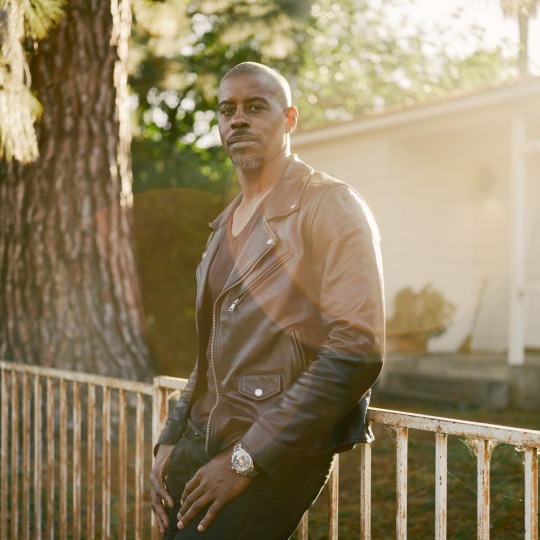
Since those dark days, Best has diversified his ambitions. He’s an adjunct lecturer at the University of Southern California’s School of Dramatic Arts, where he teaches filmmaking for actors. At Stanford University’s d.school, he has taught a class revolving around Afrofuturism, a subject that informs his belief that an optimistic future is possible through the combination of narrative art and technology.
“Jar Jar represents the possibility that whatever you got in your head, creatively, we can invent a future where this thing exists,” he said. “Just because no one has done it before, doesn’t mean it can’t be done.”
Throughout the years, Jar Jar hasn’t entirely left Best’s life. The actor has voiced the character in video games and in animated shows like “Star Wars: The Clone Wars.”
“It’s big, and it tends to overtake your life,” Best said. “The thoughts I’ve had were, ‘Who am I outside of this?’ Because as an artist, you don’t want to be locked into one thing.”
More recently, he’s rejoined the “Star Wars” universe in his own body, as the warrior teacher Kelleran Beq on the children’s show “Jedi Temple Challenge” and in an episode of “The Mandalorian.”
“This is going to sound really corny, please forgive me, but it felt like coming home,” Best said.
Despite the baggage, Best never stopped loving Jar Jar. When he meets fans — on the rare occasions that he agrees to appear at conventions — Best has noticed it’s usually young children, people with disabilities and those who have been ostracized who identify most with Jar Jar. “He’s misunderstood, but Jar Jar’s heart is so pure,” he said.
At the time of the backlash, Lucas assured Best that Jar Jar’s target audience — who were kids and for whom the character would become a fond childhood memory — would eventually come to his defense. “He was right,” Best said. “It’s a different story now.”
Witness the reception for Best in 2019 at “Star Wars” Celebration, an event dedicated to the franchise, when fans welcomed him with thunderous applause. “It really warmed my heart to see him get that,” Chiang recalled.
Heart comes up a lot when Best’s name is mentioned.
Dave Filoni, the chief creative officer of Lucasfilm and a writer on “The Mandalorian,” described him as “a unique talent, and no one can replicate what he brings through his performance as Jar Jar. There is comedy, but also a lot of heart.”
And Best takes solace in the role he’s played behind the scenes as well. He noted that the software developed through his work as Jar Jar became central to the creation of future C.G.I. characters.
“I’m in there,” Best said. “You can’t have Gollum without Jar Jar. You can’t have the Na’vi in ‘Avatar’ without Jar Jar. You can’t have Thanos or the Hulk without Jar Jar. I was the signal for the rest of this art form, and I’m proud of Jar Jar for that, and I’m proud to be a part of that. I’m in there!”
#glad he's living his best life#ahmed best#jar jar binks#kelleran beq#star wars: the phantom menace#star wars#the new york times
10 notes
·
View notes
Note
Hey! I have a paper on Buster Keaton coming up in my History of Film class? Would you be willing to info dump everything you know about him? I've only heard of this man through your blog and don't know where to start haha
bruh you're lucky you weren't standing next to me when i read this, my screech would have blown out your ears.
okay, buster keaton 101. he was one of the giants of the silent comedy era, alongside charlie chaplin and harold lloyd, and from the period of 1920 to 1929 he put out 19 short films and 10 feature length films under his own studio, plus two more silent films under MGM that can creditably be called his creations (i use his filmography page on wikipedia to keep it all straight). he also had the unique distinction of doing all his stunts himself, as well as doubling for many of his co-stars. most of these stunts have never been replicated, because honestly they'd probably kill people; his crew called him the "little iron man" because he was fearless and nigh indestructible. he was also a genius behind the camera, in ways that unfortunately i probably can't fully appreciate.
he was born october 4, 1895 in piqua, kansas, during a one-night stopover. his parents were working with a traveling medicine show at the time, to little acclaim, along with harry houdini before he got big. buster's first known stage appearance was as a toddler, interrupting his father's act. at first they tried to shoo him offstage, but his antics drew bigger laughs from the audience, so they decided to incorporate him into the act—leading to what would eventually be called, once they reached vaudeville, "the three keatons." buster said in interviews that his first salaried year was at 5 years of age, in 1899. that was when his family finally hit the big time—and he was almost single-handedly responsible for it.
their act is incredibly difficult to describe. the central conceit was: joe keaton threw little buster across the stage in a parody of strict parenting, while myra keaton played accompaniment on the saxophone. the best description i've found is biographer rudi blesh's, in his 1966 book, Keaton, on pp. 30–33 and 47–48. you can borrow a copy here. (be careful with this book; the author has a way with words, but he sets aside facts in favor of mythology more than once. for a rigorously researched and trustworthy biography, one with all the dates and weights, go for A Filmmaker's Life (2022) by james curtis.)
vaudeville was buster's early training ground, where he learned tumbling, comedic timing, improvisation, and how to construct a gag. most film comedians of the era got their start in vaudeville or comparable music halls, and many of the gags buster performed in his movies were adapted from vaudeville stage magic or repurposed from the family act. if there's one single book on buster keaton i'd recommend, it's Camera Man (2022) by dana stevens. it's not as dense or as thorough as the james curtis book, but it's an extremely good overview of the main events of his life AND the surrounding historical context—including vaudeville. it's also just a really fun read.
buster's vaudeville era ended in 1917, when he was forced to break up the family act over his father's worsening alcoholism. the official party line is that joe couldn't handle the fact that he was getting older, which i think is partly true, but i think a more true explanation is that he couldn't handle the fact that he was outshone by his own son (pretty much all sources agree that buster was the better comedian). he took his anger out on buster onstage during performances, and out on his wife offstage between performances, until myra finally had enough. she and buster ditched joe in los angeles when buster was 21 years old. here's an interesting paper that digs into buster's rough childhood and the impact it likely had on his films.
buster almost immediately found work as a solo act, but a chance encounter with an acquaintance introduced him to roscoe "fatty" arbuckle, then one of the highest-paid, most well-known comedians in film. it took one day on set—and one night disassembling a camera—to convince buster to abandon the stage for a film career. as a bonus, he and arbuckle became life-long friends. they spent the next three years working non-stop, making 14 short films together (plus a couple more buster wasn't involved in, during the 10-month period he was overseas for ww1). the grueling schedule wasn't without its downsides, and arbuckle, tired of making short films, decided to move to feature-length films, which had a slower, more relaxed pace. he left buster his entire studio and crew.
and that's when the real magic began. buster started (continued) with short films: 20 minute "2-reelers" that were played before a feature film, basically doing what looney tunes cartoons would do later. the best way to understand how different buster was from the dominant comedic idiom of the time is to watch a couple of arbuckle shorts ("coney island" and "the garage" are good choices), then watch a couple of buster's own ("one week" and "cops" are probably the best known). buster catered his humor to an older audience, and his gags were sophisticated, subtle, often cynical or ironic, and intricate to construct and film. "keaton made you laugh, then think" (blesh, xi).
in 1923, buster dropped short films in favor of feature-length films, starting with "three ages." he was a little behind the curve on this, but not through lack of trying; if he'd gotten his way, he'd have been the first major comedian to switch to feature-length films. unfortunately, studio contracts and his producer's cold feet held him back for a few more years, so chaplin and lloyd got there first. not that that slowed buster down; his output in the eight years he had creative control is virtually unmatched. despite getting married (in 1921, to natalie talmadge) and having two children (james, 1922, and robert, 1924), he continued filming at breakneck pace. to see what he could do with a camera, i'd recommend "sherlock jr." to see him at his cinematic best, i'd recommend "the general" "the cameraman" (i just committed cinematic heresy with that recommendation, but IN MY DEFENSE it was thee romcom training film for 20 years at MGM, well into the talkie era, so it's hardly a dud :p).
in 1928, buster's producer, joseph schenck, sold his contract to MGM. buster wasn't the owner of keaton studios, just an employee, so he didn't have much say in the matter. both chaplin and lloyd tried to talk him out of it, but in the end he signed the new contract anyway. later, he said it was the worst mistake of his career. denied the creative control he was accustomed to, he gradually descended into full-blown alcoholism, running away from his studio responsibilities and his disintegrating marriage alike. his final film for MGM, "what! no beer?", was an attempted buddy comedy with jimmy durante, and buster was visibly drunk or hungover in almost every scene. MGM fired him in 1932; his divorce, started in 1932, was finalized in 1933.
from there, buster had some dark years. he got married a second time, in 1934, to mae scriven (who mostly seems to have been a con artist), before they divorced in 1936. he was in and out of various rehabs, and nearly died at least once, before he managed to buck the odds and dry out. he spent the last years of the '30s working as a gag man and consultant for other comedians at MGM.
after that, things started to get better. he met his third wife, eleanor norris, in 1938 and they married in 1940. he had a couple high profile cameos in big movies, my favorite being the one in "sunset boulevard," where he played one of norma desmond's waxworks. then, a massively popular article by james agee, titled "comedy's greatest era," was published in LIFE magazine in 1949, kicking off a resurgence of interest in silent film as an art form and as a feature of cinematic history. agee paid special attention to buster, and that, combined with buster's own fascination with the up-and-coming technology of television, led to his comeback. he worked steadily and enthusiastically in television (and occasionally in movies) up until he died of lung cancer on february 1, 1966, living long enough to see his films receive the recognition they deserved. (also here, have this nice article i found while trying to find the one by james agee.)
i've never taken a film history class myself, so i can't begin to explain all the ways buster keaton advanced filmmaking. here's an article that analyzes the gag as a staple of film comedy; a book that analyzes buster's comic and directorial style chiefly through "the general"; and another article that explores gags, this time specifically mechanical gags, and has lots of nice things to say about buster. if this isn't enough and you decide to go whole chicken fried hog on buster like i have, hit up me, @spokir, or @busterkeatonsociety and we can connect you with all the material you could possibly want.
enjoy!!!
(colossal, chrysler building-sized thanks to spokir, who sourced most of these articles. seriously, talk to your local librarian, they WANT to find things for you.)
54 notes
·
View notes
Note
1,2, 8 and 19 for the movie ask!
What is your current favorite film?
It's hard for me to pick just one... I usually go with The General because that movie has the perfect balance of thrills, comedy, and beautiful direction... plus Buster Keaton with long hair <3.
Of course, I also obsess over Wait Until Dark a lot. That's probably the movie I've rewatched most in my adult life because even though it's suspense incarnate, I also find it weirdly comforting. I just love the late 60s vibe, the characters, and the insane con plot.
What was your favorite film as a child?
Disney's Cinderella. I loved the atmosphere and the animation. The music is beautiful and the stepmother is one of the best movie villains ever. I also think the sequence with the key is among the most nerve-wracking shit in cinema.
Has a film ever made you extremely angry?
Female with Ruth Chatterton really annoys me. And then there's the Disney Star Wars trilogy which is just horribly written and a total waste of potentially interesting concepts. And then there's Avengers Endgame, with its lazy time travel BS.
Okay, so there are quite a few movies that make me mad lmao.
What part of filmmaking do you find the most interesting?
Oh gosh, I have no idea. So much about cinema fascinates me. Great movies are a complicated magic trick in which so many factors need to work to make you forget you're just watching a screen.
I would say what fascinates me most tends to be direction, acting, and music. But I've been getting more interested in editing lately, and marketing also fascinates me.
4 notes
·
View notes
Photo

🤩🤩🤩🤩 Isso é a vida real? Isso é apenas fantasia? Sim, é realidade!!! 😍🤩 O autor James Curtis confirmou a minissérie baseada em seu livro "Buster Keaton: A Filmmaker’s Life", com Rami Malek no papel principal!! E @pollyannabennett já está trabalhando com Rami!!! 😍🤩😍🤩 Rami e Polly, a dupla de ouro unida novamente!!!! Sabemos que a 1a parceria deles foi perfeita!! Isso fica cada vez melhor!!! Nossa expectativa só tá aumentando!!! 😍💓❤ . #ramimalek #busterkeaton #cartier #tankfrancaise #ramisaidmalek #amsterdammovie #oppenheimer #breakingdawnpart2 #semtempoparamorrer #mrrobot #elliotalderson #Thepacific #borhap #bohemianrhapsody #freddiemercury #TheLittleThings #notimetodie https://www.instagram.com/p/CnpT-bjrJss/?igshid=NGJjMDIxMWI=
#ramimalek#busterkeaton#cartier#tankfrancaise#ramisaidmalek#amsterdammovie#oppenheimer#breakingdawnpart2#semtempoparamorrer#mrrobot#elliotalderson#thepacific#borhap#bohemianrhapsody#freddiemercury#thelittlethings#notimetodie
2 notes
·
View notes
Text
An embellishment to the skit that brought the biggest laugh of all. It wasn’t Keaton’s invention–he always gave his father the credit–but it was an idea that took the pratfall to the level of high art, a signature bit that would remain in the collective memory of an entire generation of viewers. As Wynn used a kettle of boiling water to loosen the grip of the molasses on his shoes, Buster hoisted on leg onto the counter, then the other, and seemingly paused in mid-air before plummeting to the floor–where the sticky stuff proceeded to saturate the seat of his pants.
How he did it without breaking his neck was a mystery to many, but to Keaton himself the technique was elementary.
“When he did the ’Butcher Boy’ fall,” Eleanor explained, “his feet were high enough that when he crashed, all his weight fell on the shoulders, which is where it should be. He’s got that heavy muscle structure [and it] acted like a pad. The spine, the tailbone–nothing like that ever touched the floor. You could get hurt. But if you held your breath and tensed the muscles, it doesn’t even knock the wind out of you.”
(James Curtis, A Filmmakers Life, pg 536)
#buster keaton#1930s#1910s#1920s#1920s hollywood#silent film#silent comedy#silent cinema#silent era#silent movies#pre code#pre code hollywood#pre code film#pre code era#pre code movies#damfino#damfinos#vintage hollywood#black and white#buster edit#old hollywood#slapstick#butcher boy fall#I can't believe I forgot the second clip in my video GAH
104 notes
·
View notes
Text
This Day in Buster…November 20, 1921
“The Boat” premieres in Ohio. Have a quote on “The Boat” from James Curtis’ biography, “Buster Keaton: A Filmmaker’s Life.”
#this day in buster#buster keaton#1920s#the boat#silent era#silent movies#vintage hollywood#James curtis#biography#sybil seely#ibks#the international Buster Keaton society#Buster Keaton society#the damfinos#damfino#damfamily
19 notes
·
View notes
Text
“Six years later, Keaton was sharing an office with Sedgwick they called the Boars’ Nest. Buster had taken to embroidery to pass the hours, and was at work on a project when Philip Scheuer of the Los Angeles Times paid a visit. “Just a purse I’m making—for the missus,” Keaton explained, casting it aside.”
Excerpt from: Buster Keaton: A Filmmaker’s Life by James Curtis
30 notes
·
View notes
Text


Coming November 25, 2023
13 years in the making, and the companion book to my film Oh Buster, Where Art Thou?:
Another New World: The Resurrection of Buster Keaton
Putting the magnifying glass on the last two decades of the life of Buster Keaton, his family and close friends, the book includes:
+Over 500 pages of exclusive content
+60+ rare and unpublished, fully-restored photos
+Original artwork
***My painting of Buster featured on the cover will be available for sale in my RedBubble shop on everything from stickers to clothing, soon.***
Make sure to reblog to share the news with all your Buster Buddies!!
Back cover synopsis text copied below:
What happens when one of the world’s most famous, and talented men loses everything?
He begins again.
He remarries. He and his wife move in with his mother, and siblings. He rebuilds his career and relationships, damaged by years of alcohol abuse. He discovers there are more people in the world than himself. He stands by his brother through his disintegrating marriage, and supports his sister as she strives for independence. He doubts himself. He takes risks. He rediscovers his confidence, and finds his voice. He looks to the future, and he never gets stuck in the past. He works endlessly. He is a master of stage, screen, filmmaking, stunts, and choreography, and he becomes a master of television and New Wave Cinema. He revolutionizes comedy and drama, and he is a pioneer of Surrealism. His voice has survived sound, and his face has survived color. His achievements are celebrated. He is shattered by loss. He falters, and he recovers. He loves, and is loved. He dies, and he is remembered.
What happens when one of the world’s most famous, and talented men loses everything? He begins again.
But he doesn’t do it alone.
Another New World, the companion book to Nicolette Olivier’s film Oh Buster, Where Art Thou?, shines a light on the final two decades of the life of Buster Keaton, and invites you to join the family to hear the untold, true story of Buster's legendary resurrection.
#buster keaton#buster keaton book#buster keaton documentary#oh buster where art thou?#buster keaton biography#silent film#silent era#non fiction novel#movies#tv#movie history#tv history#classic tv#classic movies#history#biography#nicolette olivier#another new world
6 notes
·
View notes
Text
Rami Malek interpretaría a Buster Keaton en mini-serie biográfica
Matt Reeves producirá una mini-serie biográfica sobre la vida de Buster Keaton, que sería interpretado por Rami Malek.
Warner Bros. Television ha puesto en desarrollo una miniserie biográfica de Buster Keaton, una de las mayores figuras del cine mudo, que será producida por Matt Reeves. Para interpretar al cineasta se ha elegido a Rami Malek, quien además también será productor.
El guión sería escrito por Ted Cohen y se dice que la fuente sería el libro Buster Keaton: A Filmmaker’s Life de James Curtis. En este…

View On WordPress
2 notes
·
View notes
Text
2022 recap tag game
Tagged by the awesome @nitrateglow
top 3 films: Top Gun: Maverick, Robocop, The Apartment
top 3 shows: The Grand Tour, Stranger Things 4, What We Do in the Shadows
top 3 books: ILM: The Art of Innovation, Buster Keaton: A Filmmaker's Life, Without Remorse
top 3 biggest improvements: I learned not to seek validation from the wrong people. I learned it's okay to be sad and to grieve just as it's okay to be happy and to celebrate life. I learned your current situation is not your final destination.
top 3 resolutions: 2021 was a blur, but going back to 2020...yeah, I achieved a lot, all things considered.
favorite song: "Rock the Casbah" by The Clash
favorite quote: "Good luck, have fun, don't fall in" - a coworker I'll miss when I leave
2 notes
·
View notes